When I was in Milan for the Furniture Fair/Design Week I took a break from all the current design talk and looking and went to the Triennale for the inaugural show of the new design Italian museum hosted there, "The Seven Obsessions of Italian Design." If I had more time, there are many aspects of the show I'd like to explore: the excellent exhibit design, the intriguing and beautiful objects, the absurd sexism of a film loop of giant naked women's butts when talking about "comfort," the insightfulness of the theme, the daring of putting a Berretta handgun as the totem object for the "Energy" obsession, the oddness that the exhibit treats Italian design like an art movement that already happened, ending around 1982. Unfortunately, other than to list those, I'm not going to talk about them, but I urge you to go to the show if you're in Milan.
The one thing I'm going to talk about is how the show's curators use animism as the foundation for describing the origins (and presumably the core) of Italian design. And, frankly, I'm not even going to talk about it. I'm going to quote a big chunk of the catalog introductory essay by Andrea Branzi (as translated in the L'Europeo magazine catalog--there were at least two, and possibly three English translations of the text available: one in this magazine-style catalog, one in the book catalog, and one in the exhibit itself).
Italian design (which has never had a single style or sole work methodology) uses technology to express artistic possibilities, and art to express its technological possibilities. Its project philosophy still conserves the deep-rooted influences of ancient Latin animism and pre-Roman mysticism, which attributed a soul to every object, a soul that could be called forth at will and was not just a distant reflection of utility and esthetics. All of this still constitutes the difference between design in Italy and that in other countries, which often interpret design as a function of business guided by marketing. In other countries the history of design consists in a succession of formal styles and typologies and therefore represents a lesser reality, devoid of autonomy, crushed between the Great Histories of Art and Architecture. In Italy on the other hand household objects, work tools or pieces of furniture have always been co-protagonists of a broader history, of "elevated" events connected to cultural anthropology, religion and politics; to the point where Italian design constitutes an integral part of the country's overall history, supplying many precious indications regarding ways of thinking, behaving and being.
The animism theme continues with the first of the show's obsession, "The Animist Theater"
Beginning with the Latin Domus and continuing right up through modern times, there has been an idea of the house as a theatrical place in which household objects are actors participating in a dialogue with inhabitants (like in the Palatine Anthology in which lovers call on lanterns or beds to testify to their oath of love), and, like "household pets," which protect the house from the dangers of fate and evil-doers.[the description continues and describes the household as the stage in which the "comedy of life" has been played out from ancient times to the present -mk]
In my experience, Italian design has always been held up as the sensual and emotional side of Modernism. Exemplified by folks like Pininfarina, it's held up as how to successfully fuse emotion and desire with functionality to create beautiful and useful objects. That may well be true, but for me what's interesting in this description is that an Italian design critic bases that success on an animist relationship to everyday objects. I don't think that Italian designers consciously thought of their products as alive, but as a cultural phenomenon it seems for me to approach the idea of an implicit design metaphor that has guided Italian design to create objects in a certain (commercially successful) way. As someone who is thinking about magic as a design metaphor for future technological products, it's interesting--and heartening--to see this retrospective analysis as an explanation of a metaphor that worked.
Tangentially: several of the photos at the top of this blog post are from the third major design experience I had in Milan this year, the Milan Monumental Cemetery. If you think that ancestor worship is not a contemporary European phenomenon, you need to go to this place. 100+ years of Milanese money, technology, and competitiveness have come together to create a fantastic, enormous architectural theme park for the dead. I have a Flickr set that would have been even bigger if my camera's battery hadn't run out.


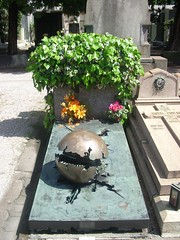

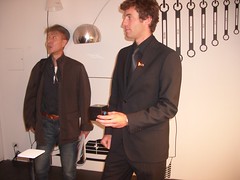
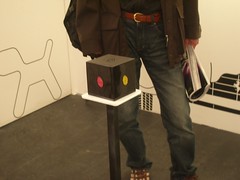

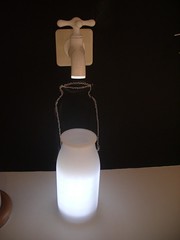

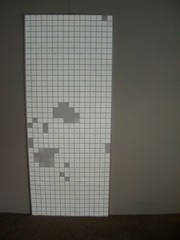



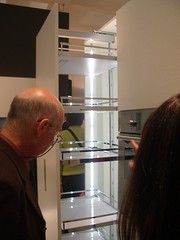

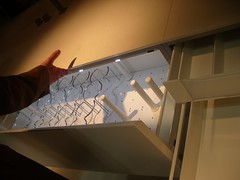

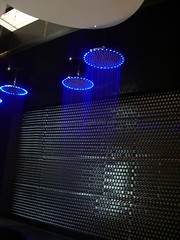
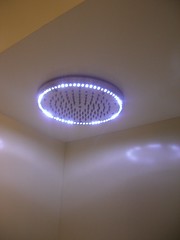


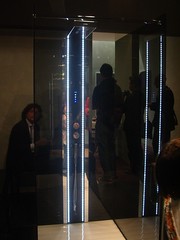

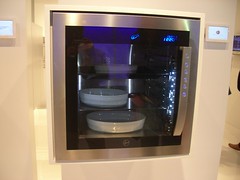

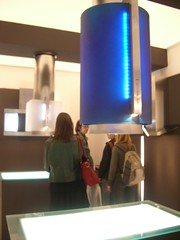




Recent Comments